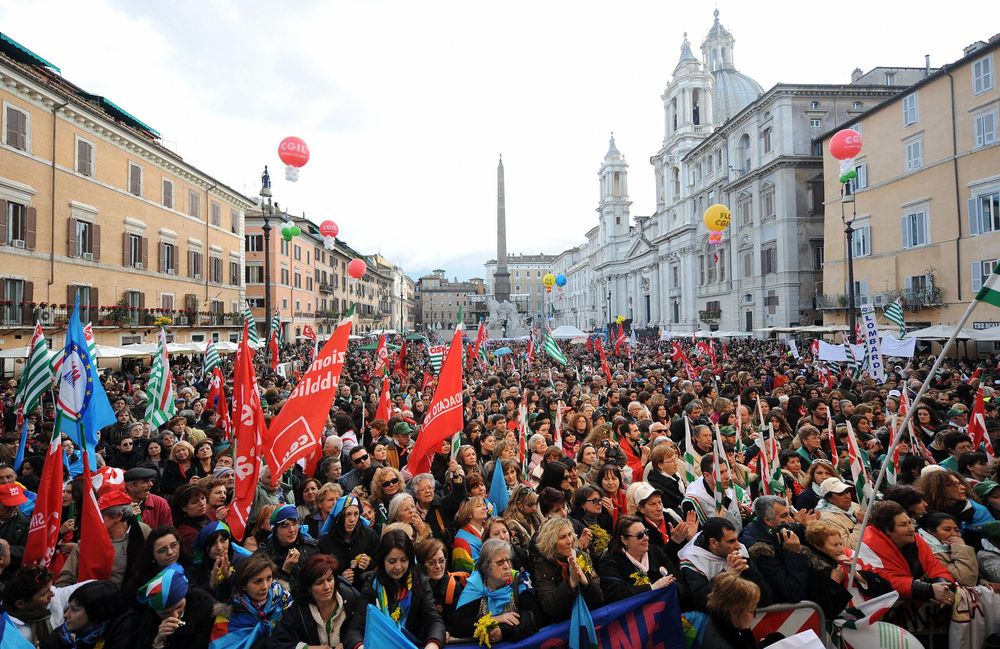‘Feminism’ vs. ‘Womanism’ vs. ‘?’
Some recent articles focusing on Women’s History Month have been quite provocative, especially when penned by women of color. I have had my proud and persistent dedication to feminism challenged in the past and have made amendments as a result, but these newer perspectives along with their reminders of some past problematic manifestations of the term enlarged my thinking once again. Since openness to the new is what I am constantly urging on the Church hierarchy, I thought I’d better be modeling more expansive thinking myself!

In her March 10 article Parity With Men Is No Longer Enough, author Xochitl Gonzalez made a distinction between “feminism” and “womanism”. As a Latina attending university in the 1990’s, she saw touted third wave feminist ideals centering on sexual assault, sexual positivity, and beauty standards. “While I saw these as valid concerns, they felt narrow, luxurious even, compared to what I and my fellow classmates of color were experiencing: food insecurity, economic stress, bias—overt and implicit—in the classroom and elsewhere on campus. Using the label of “feminist” felt like speaking to the smallest corner of concern in my heart and life.”
She and other minority students found themselves agreeing with African American women’s historian, Ashley Farmer, who said: “When we actually get down to representation or creating a list of demands or mobilizing around a set of ideas, it tends to be that white middle-class or upper-class women’s priorities get put above the rest.” In her own struggles as a minority female, Gonzalez found herself supported by a community of women from diverse racial, ethnic, religious backgrounds, all of whom “had radical sympathy for each other.” They were not ‘feminists’, she insisted, but ‘womanists’.
‘Womanism’ is, to many, including Gonzalez, a more expansive term. None other than the great Alice Walker generated the term in 1979 to make feminism itself more inclusive. A womanist, she defined, is a “feminist of color… committed to survival and wholeness of entire people, male and female…Womanist is to feminist as purple is to lavender.” Gonzalez points out another African American scholar, Clenora F. Hudson-Weems, who further clarified Walker’s distinction: “Feminism confines itself to concerns of the “female,” while womanism is about the concerns of women in society, and therefore includes concerns about family, gender, class, and race.”
I had some problems with a term advocating more inclusion to be excluding in itself. Why “womanism” when obviously, by definition, the term includes men and other-gendered as champions and championed as well? Maybe it is used in the same way as “Man” has been used to imply all genders throughout the ages, including by excluding. Not satisfactory, I think. That said, I do believe even we “Catholic feminists” may need to rebrand ourselves if only to counter the criticisms (by so many of our clerics but also among ourselves) that we are out to create a just another form of patriarchy. Gonzalez quotes critic Jessa Crispin: “If women in power behave like men do, that is not a defeat of the patriarchy. That’s just patriarchy with women in it.”
One of my favorite of her points was this: “For me, feminism has begun to feel less like a movement and more like a battle for a list of demands. A battle defined not by love, but by lack. One that is fundamentally rooted in a patriarchal notion of “power” and simply achieving an equal amount of it. It has primarily valued goals rooted in patriarchy—such as equal pay and the ability to climb a corporate ladder—while historically undervaluing the burdens of a woman’s life outside the traditional male realm, and what women need to ease those burdens: child care, family leave, child tax credits. In short, it has been addressing the lavender of women’s existences, while failing to see the full purple.”
As soon as I saw the allusion to purple, I remembered the purple stoles we used to wear to Mass to indicate our support of women’s ordination. In my progressive church, even a presiding priest at times wore one, and we draped a purple stole over one large cross for all to see. I think we were all ‘feminists’ and proudly so because our feminism did mean what Gonzalez calls womanism and still does. Somehow, however, despite all those symbols and witnesses and marches and activism, we failed to convey how enveloping of all genders and backgrounds and races our mission was and is. I think she nailed it by saying we too often defined our cause in terms of “lack” rather than “love”. We just need to keep expanding the “we”. Otherwise, our colors will stay a pale, faded lavender rather than a rich vibrant purple.
And so, I would amend her concluding paragraph. I like its emphasis on love rather than lack, and I like its focus on women thriving – and to this I would add in the Church as well as in society as a whole. Here is what she says:
And so, this Women’s History Month, I find myself back at womanism. Back, as I was in college, to thinking of myself less as akin to other women because of a shared feminist identity, and more as a member of a radically empathetic sisterhood who are seeking to advance policy that helps women—in all their complexity and diversity—to thrive. Because when women thrive, children, families, communities, and economies do so as well.
I believe, for our day and age and for our future, the terms ‘womanism’, ‘feminism’ and even ‘sisterhood’ are not all-embracing enough, imbued as they are with what is lacking or who is missing, for one who wants to speak of love.

2 Responses
Very good. The ordination of women is about vocation, mission, service, not power.
Wow, Ellie! Really thought provoking.